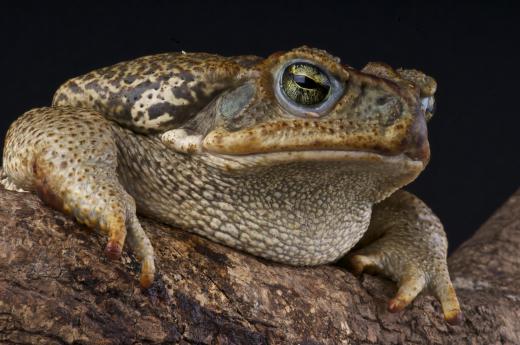What are Giant Amphibians?
 Michael Anissimov
Michael Anissimov
Today, most amphibians -- such as frogs, toads, salamanders, and newts -- are relatively small, usually under 18 cm (7 in) in size. The largest living amphibian, the Chinese Giant Salamander, is significantly larger, and can range up to 1.83 m (6 ft). However, this is very atypical for modern amphibians.
A very long time ago, before sophisticated amniotes (animals with eggs that can be laid outside of water) like proto-crocodilian reptiles evolved, amphibians were the dominant tetrapods on Earth, and included the top predators. This time began when amphibians first evolved, in the Late Devonian/Early Carboniferous, about 360 million years ago. Giant amphibians had their heydey in the Carboniferous, and started to experience a decline in the Early Permian, when larger and better reptiles, like pelycosaurs, evolved. They almost went completely extinct at the Permian-Triassic extinction 251 million years ago, but survived in small pockets in what is now Australia and China for up to 120 million years ago.

Throughout the history of earthly life, there have been three amphibian subclasses: Lissamphibia, which includes all modern amphibians, lepospondyls, an ancient Paleozoic group of relatively small amphibians, and labyrinthodonts, which includes all the giant amphibians and many others. Of these, only the Lissamphibia are still alive today. There is a lot of debate as to whether modern amphibians evolved from one of these ancient groups or independently acquired their modern characteristics.
Some giant amphibians have been called "killer newts" because of their superficial resemblance to modern newts. The group to which all giant amphibians belonged, Labyrinthodontia, is so named because the infolding of dentine and enamel on their teeth resembles a labyrinth in appearance. The most numerous labyrinthodonts were called temnospondyls, which diversified to fill many empty terrestrial niches. The most common body plan for these animals was like a very large lizard with sprawling legs and an oversized head and jaws. Some had long, slender bodies and others had short, stout bodies.
Most of the giant amphibians were between 2 and 4 meters in length, though some, like Prionosuchus, was as long as 9 m (30 ft), the largest amphibian that ever lived, and would have been one of the largest complex animals alive at the time. This giant amphibian showed a large degree of convergence with the crocodile, which it superficially resembled.
AS FEATURED ON:
AS FEATURED ON:











Discuss this Article
Post your comments